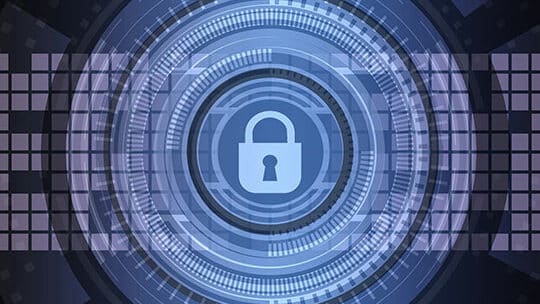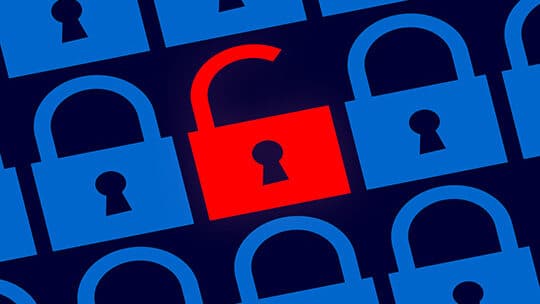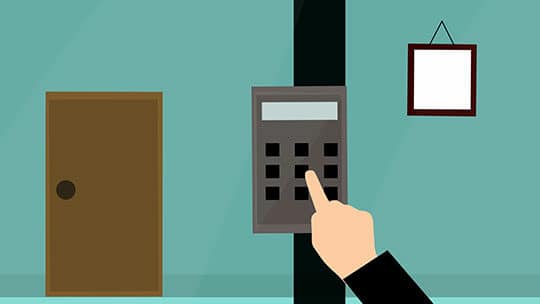Digital assets form an integral part of online stores. These refer to any material created and stored digitally. Examples include videos, images, slides, Excel spreadsheets, audio files, blogs, and eBooks. Companies love using digital assets because they’re easy to access and can quickly be shared with multiple users. Using digital assets also helps boost your marketing strategies, minimize costs, improve collaboration, and improve time management.
That said, digital assets contain valuable information about a company. For that reason, they’ve become a target of online attackers. You can lose critical data necessary to run your business when your digital assets get accessed by cybercriminals. It’s, therefore, essential to protect them against online attacks.
You can implement various strategies to improve digital asset security. These include the following:
1. Encrypt your digital assets files

One of the best ways to secure your digital assets is to only send or share them with the right people. However, that isn’t the safest route as, sometimes, they can land in the wrong hands, increasing the chances of your digital assets being compromised by hackers. For that reason, you should consider encrypting your digital asset files.
Encryption of digital assets files involves converting data or information into a code to prevent unauthorized access. This strategy works by converting information in your digital assets into non-standard language. Therefore, no unauthorized person can get their meaning.
On the other hand, any authorized user of your digital assets will be required to use specific binary codes to decode and use them. That goes a long way in enhancing the security of your digital assets. However, you must ensure you utilize the best file encryption software on the market.
Recommended for you: 13 Fantastic Ways to Improve Your Website Security.
2. Invest in digital asset management

Digital asset management (DAM) is the simplest and one of the most effective strategies for promoting online business security. It involves the use of software or computer applications to store digital content. As such, you can access your digital assets from a centralized location.
Digital asset management can help promote the security of online content in various ways. For instance, the software ensures no unauthorized persons can access them. Only individuals with necessary permits can consume or use your digital assets. This is possible as it allows you to set up permission-based access for users based on their duties.
While that’s the case, not every DAM software on the market can enforce the security of your digital assets. Thus, you need to find an application with the right protection features, like antivirus protection. Also, make sure you use a modern version of the software. That’s important since hackers like scanning old versions of computer applications to determine their vulnerability. Therefore, outdated DAM software is more prone to online attacks than new ones.
To ensure you’re using updated software at all times, you need to update it regularly. However, this might not always be easy. That’s true, especially if you’re too busy with other vital tasks. However, all isn’t lost—you can install automatic software update programs to simplify the process. That ensures your software is always up-to-date.
3. Leverage the power of the least privilege principle

You can’t ignore the power of the least privilege principle when protecting your digital assets. It helps restrict access rights for users and accounts to those files required to perform and complete specific tasks.
When it comes to digital assets, the least privilege principle involves allowing users only to access resources that’ll enable them to perform their respective roles. For instance, a marketer will only be allowed to access digital assets that can help them promote your company. Likewise, an accountant will only be allowed to access digital assets that enable them to complete daily financial transactions.
4. Create strong passwords

Creating passwords for your business systems is another simple yet effective strategy for promoting digital asset security. This involves establishing secret codes to ensure that only permitted users can view and use the stored digital assets. Simply put, no one will be able to penetrate your digital assets without the correct passwords.
You can implement various strategies to establish strong passwords for your digital assets. First of all, any password you build should be reasonably long. Ideally, it should contain ten to 12 characters. In addition, ensure you include both numbers and letters in your passwords. And, when using letters, it’d be a good idea to utilize both uppercase and lowercase characters. Finally, ensure you include a few non-standard characters, like &, *, @, $, and #, in your passwords.
You must also understand that creating strong passwords isn’t enough to secure your digital assets. You must go the extra mile and regularly change your passwords as well.
5. Implement two-factor authentication

Passwords have been used for several years to protect digital assets. However, as technology advances, passwords are becoming less effective. For that reason, most business owners are investing in two-factor authentication. You can also follow suit for your company to remain at par with others in the industry.
Two-factor authentication is the practice of adding a layer of protection on top of passwords. It ensures that no one can easily gain access to your business accounts as they must go the extra mile to prove their identity. That’s to say they’ll be required to provide more information to access your digital assets. For instance, they can be prompted to answer secret questions, enter a specific pin, use fingerprints, undergo facial recognition, etc.
You may like: Network Security 101: 15 Best Ways to Secure Your Office Network from Online Threats.
6. Back up your digital asset files

As technology advances, hackers constantly find new ways to access digital assets. Therefore, no matter how you invest in security tools, there’s still that ever-present risk of losing such assets through online attacks. Apart from that, you may also lose your digital assets by mistake, especially when you factory reset your systems. For such reasons, you can consider creating a backup plan.
Creating a backup involves copying files and data to a secondary location. It helps you recover your files in case you lose them. In simple terms, backup acts as a viable solution if all other strategies fail to secure your digital assets.
The first step you need to take is to back up your website. The best way to achieve that is by partnering with a reputable web host that provides high-quality backup services. Afterward, you need to do the same with all your business social media accounts. That ensures you don’t lose your digital assets even when your login credentials in these platforms get compromised.
There are numerous file backup service providers out there. However, not all of them are equipped enough to help secure your digital assets. For that reason, ensure you find a firm offering the most effective security features.
7. Consider getting a cyber insurance policy

You might think that you need to insure physical assets only. But, that’s not entirely the truth. You also need to insure your digital assets for various important reasons. For instance, your cyber insurance policy can help cover the cost of lost digital assets, which will ensure that your business doesn’t incur additional expenses related to investigating and recovering lost digital assets.
There are different kinds of cyber insurance policies on the market, but they all differ in terms of the level of coverage. Thus, see to it that you subscribe to an insurance policy that adequately protects your digital assets.
8. Educate employees on best online security practices

Employees are necessary for growing your business. They can assist you in running your enterprise by performing essential tasks, such as marketing, accounting, selling, etc. But, to complete these tasks, they must utilize your digital assets. It, therefore, makes perfect sense to train workers on how they can protect such assets against online attacks.
Some digital asset attacks occur due to employees’ negligence or human error. However, some are due to the lack of knowledge on the part of workers. For instance, your workers aren’t aware that sharing digital assets with outsiders puts your company at risk. Besides, they might not be aware that sharing passwords among themselves exposes your digital assets to online attacks. It’s, therefore, essential to educate them on how they can help improve the security of such assets.
You can educate your workers in various avenues. For instance, you can hold regular meetings or workshops. In addition, you can consider hiring cybersecurity experts to train your workers. All these ensure your staff has adequate knowledge in protecting and securing digital assets.
You may also like: 7 Great Ways to Secure Your Business After a Data Breach.
Takeaway

Digital asset security is necessary to run a successful business. It ensures your files aren’t compromised or stolen. It helps promote the efficiency and productivity of your business.
You must also understand that failing to secure your digital assets may hurt your firm’s reputation. That’s true since most customers will see it as a risk to trade with your business. For that reason, ensure you secure your digital assets to attract more customers and retain them.
While that’s the case, securing digital assets isn’t always easy. That’s true, especially if you haven’t dealt with digital assets in the past. But, by implementing the strategies described above, hopefully, you can achieve that goal with flying colors.





